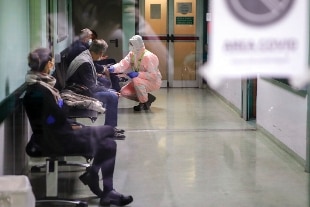Coronavirus: 20,709 new cases, 684 deaths, 207,143 swabs.
The healed are 38,740
Coronavirus, Ema: "We will evaluate vaccines based on safety and quality"
Coronavirus, the eight-point vaccine plan
Share
03 December 2020 "A few hours after the signing of the new Dpcm that should guide our behavior until the end of the Christmas holidays, the Gimbe Foundation asks the Government to maintain the line of rigor, in order to avoid a new inversion of the contagion curve and increase the pressure, already intense, on hospitals where health professionals are on the verge of exhaustion ".
this is what the president of the Gimbe Foundation, Nino Cartabellotta, asks, commenting on the weekly monitoring of the Covid-19 epidemic.
"We also ask to review the timing to reduce the color intensity of the Regions - he added - the data confirm that two weeks of 'observation' are insufficient to evaluate a tangible improvement on the contagion curve and, above all, on hospitalization rates. . In this sense, the hypothesis of an 'all yellow Italy' in a short time is more a political desire than a strategy to control the epidemic ".
"With the change of colors of the Regions only the Rt index decreased"
"On the easing of the measures of November 29, decided on the basis of the criteria of the Prime Ministerial Decree of November 3, in fact only the reduction of the Rt index weighs, given that all the others indicators have worsened since November 6, with rare exceptions ".
This is what the monitoring of the Gimbe Foundation highlights, underlining that "the differentiated containment measures seem to work in relation to intensity and duration, but some improvements are emphasized by delays in notification and incomplete data".
"Our analysis - said Renata Gili, Head of Research on Health Services of the Gimbe Foundation - confirms that, Rt aside, no tangible results are to be seen 3 weeks after the introduction of the measures. Furthermore, it suggests that fading the color of the Regions risks determining a rise first in the Rt index, then in the epidemic curve and therefore in hospitalization rates. In other words, with the circulation of the virus still too high to resume effective contact tracing and with very high pressure on hospitals, the first timid signs of improvement risk being nullified by the easing of measures ".
This is the survey by the Gimbe Foundation on the Rt contagion index in the week between 16 and 22 November: Abruzzo - 0.40%;
Basilicata -0.30;
Calabria -0.40;
Campania -0.60;
Emilia Romagna -0.46;
Friuli Venezia Giulia -0.47;
Lazio -0.31;
Liguria -0.58;
Lombardy -0.81;
brands -0.05;
Molise -0.46;
Piedmont -0.85;
Bolzano -0.66;
Trento -0.67;
Puglia -0.53;
Sardinia -0.40;
Sicily -0.22;
Tuscany -0.16;
Umbria -0.66;
Aosta Valley -0.42;
Veneto -0.35.
"The extent of the improvement of some parameters is, moreover, overestimated both by delays in notification and completeness of the data communicated by the Regions, and by some factors of not always clear interpretation. A decrease in the cases tested and limited execution of the swab in positive contacts, with consequent reduction in the incidence of new cases; delay in communicating the dates of diagnosis, sampling and beginning of symptoms, which lower the value of the Rt index; conversion of medical area beds for patients with other pathologies, with consequent reduction of hospital occupancy rate ".

